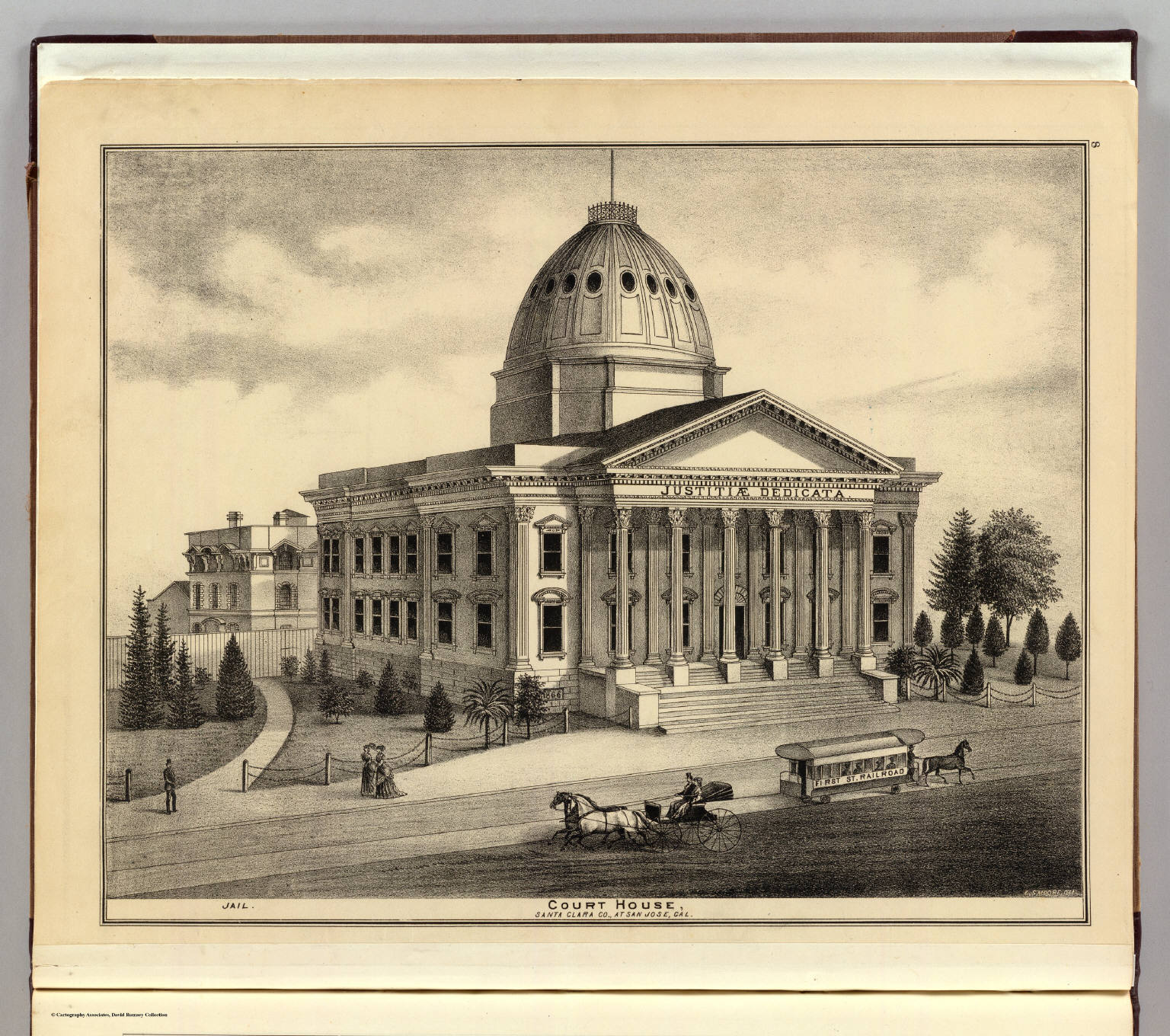 |
| The Old Santa Clara County Courthouse Photo Courtesy of David Rumsey Map Collection. |
Huck v. Kone is an employment case. Mr. Huck contends that Mr. Kone owes him disability benefits and other damages for wrongful termination, retaliation and other torts. Mr. Kone removed the case to federal court stating the parties are diverse and the amount in controversy "more likely than not exceeds $75,000." Mr. Huck offers no theory of the amount of damages in the case, but says that Mr. Kone failed to meet his burden of explaining what the damages could be. Judge Richard Seeborg explained the Ninth Circuit's procedure for determining the amount in controversy as articulated in Gaus v. Miles, Inc.
The district court may consider whether it is "facially apparent" from the complaint that the jurisdictional amount is in controversy. If it is not, the court may consider facts presented in the removal petition (or any "amendments" thereto) or may "require parties to submit summary judgment type evidence relevant to the amount in controversy at the time of removal."Judge Seeborg ordered the parties to engage in limited discovery to determine the amount in controversy and then to submit briefs on the matter.
J.P. Morgan Case v. Vu is an unlawful detainer action, and appears to be the second one Mr. Vu and others have filed. The action is worth $10,000 and as Magistrate Harold R. Lloyd explained contains no federal question. He recommended Judge Ware remand the action back to the old Santa Clara Courthouse (see above).
Richter v. White is another unlawful detainer action. Here the defendants claim that the plaintiffs violated a series of federal laws and that gives the court subject matter jurisdiction. Judge Saundra Brown Armstrong disagreed stating that "federal subject matter jurisdiction is premised on the face of the complaint and cannot lie in anticipated defenses." She remanded the case to Contra Costa County Superior Court.
Torbov v. Murphy is a family law case where Ann Murphy sought to obtain attorney's fees for representing Mr. Torbov's minor children in a marriage dissolution proceeding. As Magistrate Harold R. Lloyd explained in his report, Mr. Torbov appealed the decision of the superior court to the California Court of Appeals and, upon failing there, to the U.S. District Court. Judge Lloyd explained that federal courts do not have subject matter jurisdiction to consider appeals of state appellate courts. He recommended that an assigned District Court judge dismiss the case. Upon receiving the case, Judge Jeremy Fogel did just that.
Wynn Slots for Android and iOS - Wooricasinos
ReplyDeleteA free app for slot machines from WRI Holdings filmfileeurope.com Limited that lets bsjeon you play the poormansguidetocasinogambling popular games, such as free video slots, wooricasinos.info table games and live casinosites.one casino